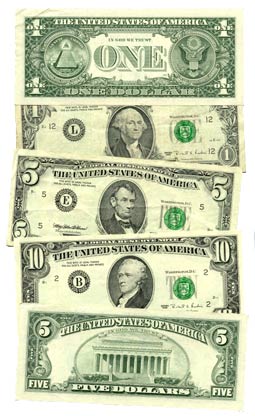Cash Value in Life Insurance
In the first installment of my life insurance series, I outlined the primary differences between term, whole, and universal life insurance. Generally, whole and universal life build cash value and term does not. While the primary purpose of life insurance is to provide money to replace income in the event of premature death, it is the existence of cash value that can provide unique planning opportunities to the policy owner. In this piece, I will provide a general overview of how cash value and policy loans against cash value are treated from a tax perspective. In order to get an idea of how cash value insurance can work for you, it’s helpful to familiarize yourself with some general terms and rules associated with it. This overview should not be interpreted or construed as tax advice or specific advice regarding how to best use you own life insurance.
Tax Treatment of Cash Values (Non-MEC)
Cash values that accumulate in a life insurance policy grow tax deferred. Additionally, cash withdrawals are treated on a first-in, first-out (FIFO) basis. This means that withdrawals up to your cost basis are tax-free. Your cost basis is the total amount of premiums you paid minus any dividends and any tax-free withdrawals that were made. Amounts in excess of cost basis are taxed as income. This tax treatment allows for opportunities to use the cash accumulations for various financial planning strategies. For example, if you have $200K accumulated in the cash value account of your policy, $100K of which is cost basis, you may be able to take out (depending on your policy) $100K before you use up your basis. This is tax-free money that can be used to supplement retirement income or contribute to tuition costs.
Policy Loans (Non-MEC)
Policy loans use the cash value as collateral for the borrowed amount, and are usually not taxable. This is the case even if you borrow more than the premiums you have paid in. These types of loans are not taxed as long as the policy is in force and are a popular way of leveraging accumulated cash. Interest on policy loans is not tax deductible.
Modified Endowment Contract (MEC)
In order to get the favorable treatment described above the policy must qualify as a non – MEC. Prior to the Deficit Reduction Act of 1984 (DEFRA) owners of cash value life insurance could put large amounts of cash in their policies and shelter the growth from taxation. DEFRA established for the first time a legal definition of life insurance. If a policy does not conform to this definition, it is deemed a Modified Endowment Contract (MEC) and technically not a life insurance policy. MEC rules placed limits on the borrowing or withdrawal of cash from policies on a tax-free basis. Also, if the premium payments made into the cash value of the policy exceed certain limits during the first seven years of the policy, it will be reclassified as a MEC. Under MEC rules, policy loans are taxable, and withdrawals may be taxed or even penalized. MEC rules apply to contracts issued after June of 1988 (as there was some grandfathering of existing contracts). These special tax rules are very complex and you should consult with your advisor to best understand how these rules may or may not apply to you.
Review Your Policy
The unique tax treatment and relative flexibility of cash value life insurance allow, within limits, for opportunities to use funds for a variety of financial planning objectives. Using accumulated cash to supplement retirement income or fund educational expenses are examples of common strategies. The key is to understand your policy and the details of how it can work for you. The first step is to locate your policy and most recent statement, and have these reviewed by someone who can explain the details and nuances.
Our Next Installment: The role of life insurance as a way of providing protection, liquidity, and leverage for estate planning strategies.
Dwight Davenport
Principal, Vodia Capital, LLC



